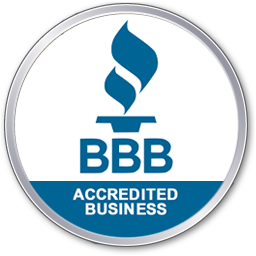If you’re reading this, you may be wondering whether certain homes are more likely than others to have radon. In general, the short answer is no. That’s because it really has almost nothing to do with the house itself — at least not as far as the type of house, when it was built, whether it has a basement, how well insulated it is or how well it has been maintained.
To understand how radon can become a problem, it helps to know a little about what radon is. It’s a radioactive gas that occurs naturally as uranium deep in the ground decays and produces radium, which in turn disintegrates and emits radon. It can be found in soil, rocks, water — and in the air, which means it can find its way into your home through gaps and cracks in the foundation, crawl space, floors and walls. If you have a well, radon can also be present in your home from well water.
Some materials used in building homes are made from natural substances that also emit low levels of radon gas, which can contribute to the overall level of radon in a home or other building.
According to the EPA, “any home can have a radon problem.” You won’t know it’s present unless you test for it because it has no odor. You can’t see or taste radon, either.
Once radon is inside your home it can become trapped. Small radioactive particles called radon progeny attach to dust and other particles in the air. These radon progeny lodge in the lining of the lungs, where they give off radiation. Eventually, the radiation can damage lung cells and result in lung cancer. The American Cancer Society says radon is the second leading cause of lung cancer, after cigarette smoking.
We all are exposed to some level of radon, whether we’re indoors or outside. How much radon is present in our environment depends on several factors, including the composition of the rocks and soil where we live and work. That varies throughout the U.S. and often even from one neighborhood to another.
Although you can’t avoid radon entirely, you can take steps to limit the amount of radon in your home, as well as the health risks associated with long-term exposure to radon.
Radon Tests and the Radon Testing Process
There are three types of radon tests used to measure the level of radon in homes and other buildings: short-term and long-term test kits, and continuous monitors, which need to be calibrated to EPA standards up to twice a year to provide accurate results.
While short-term do-it-yourself test kits are available, they aren’t necessarily the most reliable means of testing. They may be able to detect whether radon is present (which is virtually guaranteed), but they don’t always provide an accurate reading as far as the level of radon, and they won’t reveal how the radon is getting inside the home. Plus, the testing device has to be sent to a lab for analysis after the test has been completed.
Alpha Environmental uses professional-grade continuous monitors to perform 48-hour radon tests. During the testing period, windows and doors must remain closed as much as possible to create a “worst-case scenario.”
What if Radon Is Discovered in Your Home?
As we noted earlier, virtually all homes have some level of radon. The goal, obviously, is to protect your family by minimizing the level of radon in your home.
While the EPA recommends taking action if the radon level in your home is at or above 4 picocuries per liter (pCi/L), it also says that no level of radon is considered safe, and even levels below 4 pCi/L can pose a health risk. The EPA further notes that radon levels can be reduced to 2 pCi/L or lower in most homes.
If Alpha Environmental conducts radon testing in your home and finds elevated levels of radon, we examine all potential causes to pinpoint the source. From there, we can work with you to develop a radon mitigation plan.
What the Radon Mitigation Process Involves
Basically, here’s what happens with radon mitigation: First, any cracks or openings in the foundation of the house are sealed. Then, a system is installed to redirect the radon from beneath the home to the outside.
There are three main types of systems used for radon mitigation. The type of foundation a house has and other factors will determine which system is appropriate:
- Sub-slab suction – Also called a sub-slab depressurization system, this type of system is the most common one used for homes that have a basement or a slab foundation. PVC piping is inserted through the basement floor or slab and runs up to the roof, either inside or outside the house. A radon fan is connected to the piping to draw air from beneath the slab, creating a vacuum. The air flowing through the pipe is released outside through an exhaust vent. The vacuum created beneath the slab prevents radon gas from flowing upward into the house.
- Drain tile suction – For homes that have a drain tile system (also known as a French drain) to collect and redirect water seepage away from the house, a drain tile depressurization system may be used for radon mitigation. This system is similar to a sub-slab suction system except instead of inserting the PVC piping into the slab, it’s inserted into the drain tile tube or the sump cover. The pressure field that is created draws out the radon gas.
- Sub-membrane depressurization – This system is used for homes that have dirt or gravel crawl spaces beneath them instead of a slab. Thick plastic sheeting or some other type of impermeable membrane is used to line the crawl space and is sealed to the wall and piers of the crawl space. Either a suction pit under the membrane or a fan is used to draw the radon gas that’s beneath the membrane through PVC piping to the outside. Like the others, this system creates a negative pressure area beneath the house that prevents radon from flowing upward into the home.
Some homes may require more than one type of depressurization system if there are multiple types of foundations.
Numerous factors will affect the cost of installing a system, such as the condition and layout of the house, how high the radon level is inside the house and what type of soil is below and around the foundation. In general, radon mitigation costs range from $1,000 to $3,500 for installation, with average prices falling somewhere between $1,500 and $2,000. The annual cost of operating the system is usually relatively minimal.
Main Components of a Radon Mitigation System
The configuration of a radon mitigation system will be different from one home to the next, but most systems have several components in common:
- Suction pit – This is a pit created under the foundation of the house during the installation process. Radon gas collects in the pit from the soil below the foundation. The radon fan draws the gas up through the PVC piping so it can be released outside. The size of the suction pit depends on how dense the soil is — denser soil should have a larger pit.
- Monitoring devices – All systems have a manometer (often a U-shaped device) and most have an active notification monitor as well (typically has a digital readout). Both indicate whether the radon fan is operating properly. The static pressure reading on the active notification monitor should be somewhere between 0.5 in and 1.75 in.
- Radon system tag – After the radon mitigation system has been installed, the professional who installed it will attach a tag with the name, phone number and license number of the installer, and the date the installation was completed.
- Radon fan – The fan draws the radon gas through the piping. It has to be installed in a space that is not inhabited (e.g., the attic, or outside) and can’t be located below a livable space.
No matter which system is installed, a test should be performed within a short time after installation to ensure that the system has effectively reduced the level of radon. After that, regular radon testing is necessary to make sure the system is functioning properly.
Contact Us for Radon Services in Portland, OR
Ongoing exposure to radon in your home is a potential health hazard for you and your family. Radon progeny can damage DNA and increase the risk of developing lung cancer.
While radon is present in nearly all homes, the radon mitigation process can make your home safer by reducing the amount of radon you and your family are inhaling.
Testing is the only way to find out how much radon is in your home. Alpha Environmental can perform a highly accurate test and provide the results as soon as the test has been completed. Then, if we detect an elevated level of radon, we can advise you on the radon mitigation process and implement the most appropriate method of remediation for your home.
To get started, call us at (503) 292-5346.




